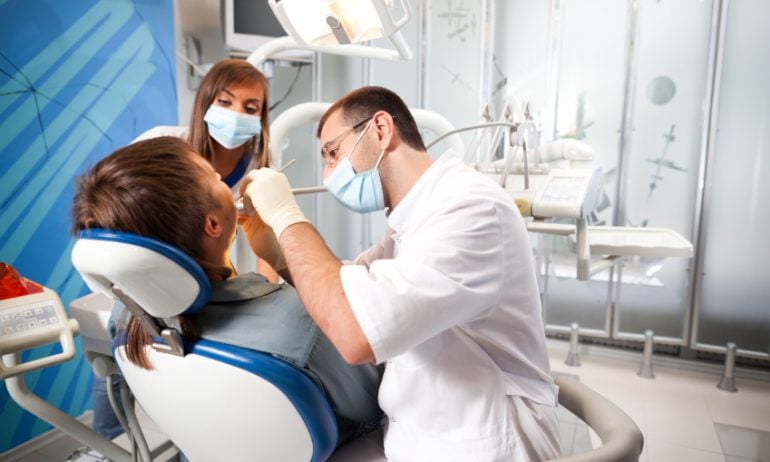Many or all of the products featured here are from our partners who compensate us. This influences which products we write about and where and how the product appears on a page. However, this does not influence our evaluations. Our opinions are our own. Here is a list of our partners and here's how we make money.
Roughly 77% of dentists own their own practice, according to the American Dental Association. Dentistry school gave you the technical skills to do the same — like filling cavities and keeping teeth clean and healthy.
But it likely didn’t teach you about raising capital or managing business debt, which are necessary to run a business.
Starting a dental practice can increase your earning potential, but it will require being a successful small-business owner. Here are tips and options on how to get started.
How much do you need?
We’ll start with a brief questionnaire to better understand the unique needs of your business.
Once we uncover your personalized matches, our team will consult you on the process moving forward.
Choose a career path
You likely shouldn't jump straight into starting a dental practice post-graduation. Instead, it will often make more sense for you to join an existing practice as an associate and work your way up.
This will not only give you a feel for the industry, but it will also allow you to get your finances ready to apply for a dental practice loan. That should include building your credit history and making inroads on dental school debt.
Once you feel ready to branch out, you'll have two primary options:
1. Build a practice from scratch
Starting a dental practice can cost more than $500,00, according to Bank of America. Among other costs, you'll need to pay for:
Building out an office — which usually has specialized plumbing and electrical needs.
Setting up a basic dentistry workspace featuring cabinetry, dental chair, lighting and digital X-ray equipment.
Providing working capital to get your business up and running.
The startup route can be tricky; overspending is easy if you lack a clear business plan. That plan must also address whether an additional dentist is actually needed in your desired location.
» MORE: How to start a small business
2. Buy an existing practice
One way around startup risks is to buy an existing dental practice. Of course, this strategy isn't foolproof.
Just because a practice is in place doesn't mean it's thriving. Review records like the practice's prospectus and tax returns, as well as its general goodwill (like customer satisfaction), to determine an appropriate valuation.
The ADA says dentists are more likely to buy a practice than start their own, often by taking over for a retiring dentist.
Figure out dental practice financing
You'll likely need a small business loan to start a dental practice. Your options can include:
Traditional banks. Many brick and mortar banks offer loans specifically for dentists. Some even offer discounts for dental associations. For example, members of endorsed associations receive a 50% discount on administration fees at Bank of America.
Online lenders. It may be easier to qualify with an online small business lender instead of a traditional bank. Online lenders also tout the speed of their application and approval processes, which may range from a few hours to a few days.
SBA loans. The U.S. Small Business Administration guarantees business loans, which are issued by participating lenders. These loans usually come with flexible terms and low interest rates, but requirements are stringent and the application process can take months.
No matter the institution you apply with, you'll need your finances in order.
It's no secret dentists have student debt — the average dentist in the class of 2020 owed more than $304,824 in dental school loans. Lenders may look past that, but not other red flags like:
You don't have enough cash flow to support all your debt obligations.
You have a subpar credit score or a history of late payments.
The practice you're buying has underperformed, or you're lacking professional experience.
Address your student debt
Your student debt may be your biggest monthly bill. If your loans are creating a cash flow problem, two dental school loan repayment options can help:
Enroll in income-driven repayment. Income-driven plans tie federal loan payments to a percentage of your discretionary income, typically 10%. IDR could give you the lowest possible monthly payment, depending on your income. But you also may pay more overall under this plan.
Refinancing to a lower payment. Refinancing dental school loans at a lower interest rate can reduce your monthly loan payments to increase your cash flow. You'll also potentially save money overall, but refinancing federal student loans will cost you options like income-driven plans.
The right option will depend on your overall financial situation, including things like credit card debt, mortgages and car loans.
A financial advisor who specializes in dental practices can help you evaluate all your choices. Joining a professional organizations of dentists is one way to find such an advisor.
On a similar note...







